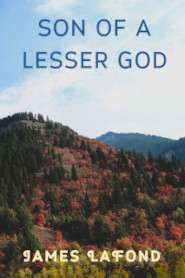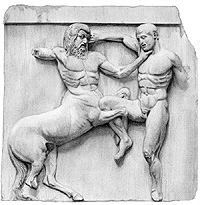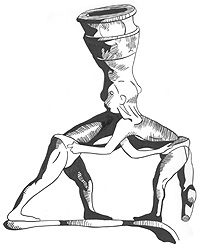1853, Narrative of Solomon Northup, a Citizen of New-York, Kidnapped in Washington City in 1841, and Rescued in 1853, from a Cotton Plantation Near the Red River, in Louisiana, 282 pages
Dedicated to Harriet Beecher Stowe
Note
It is quite obvious from a reading of Solomon's experience that a very old and well-established system of depriving free people. both black and white, in the North and the South of their freedom, and selling them as chattel, was firmly entrenched in early America. It is also obvious that white slaves were being held on plantations in the Red River region as late as 1853. It is furthermore possible—indeed, likely in this reader's opinion—that Solomon was abducted and sold into bondage for a final time, rather than being killed for his bringing of criminal charges against his captors. He literally disappeared from the historical record, with no inkling of his fate.
I am usually not one to go for a book after seeing the movie. In this case I had to. The movie, 12 Years A Slave, was one of the most powerful movies I have seen, and I know for a fact that most people will choose not to view it because of the subject matter—a subject that most would rather forget, and at the least downplay its horrific nature. This whitewashing of slavery and other coercive government institutions, has been so effective that we do not realize that most of us are descended from slaves. The practice was defined in statute in the Antebellum South, as well as in Hammurabi’s Code, the Old Testament, and many another collection of lies that have been used by the few to exploit the weak.
Solomon begins his narrative by stating that he has no knowledge of slavery outside of his experience. That experience was had in Washington, Richmond, on a ship sailing from the Chesapeake to Louisiana, in New Orleans, and on the cotton, sugar cane, and lumber plantations of the Bayou Bouef region near the Red River. There is very little information on the nature of slavery in most states. Twelve Years A Slave is a goldmine for the researcher. Many everyday items and practices are imbedded in the narrative. One heads up for you sentimental Stars and Bars lost-cause readers, coffee in the slave states was made by scorching cornmeal on a griddle and then using that for coffee grinds. Talk about a crappy economic model.
The Movie in Light of the Book
It is my opinion that the movie adaptation of Solomon Northup’s twelve-years of living hell was nearly perfect. There was much compositing. There had to be. If a comprehensive film adaptation had been done it would have required a trilogy of movies or a miniseries. I was very curious as to one scene, in which Solomon is attacked by an overseer, and then overpowers him and whips him with his own whip. That scene was nearly identical to one in Frederick Douglas’ An American Slave. I thought maybe something was being added to make Solomon seem more manly, since he wasn’t the defiant bruiser that Frederick was.
Not only did he recount an attack in which he turned the tables on his owner [it was not an overseer, but a ‘master’ who was renting him], but it was just the first of many. This man, Tibeats, had mortgaged Solomon from his debt ridden owner, and attempted to whip him the one time, and then tried to murder him on four occasions! A hatchet, an axe, a white oak rod, and a pack of dogs, were all used in cruel attempts on Solomon’s life, even though Solomon was regarded by the masters of the region as a model slave. There were no reasons for these attacks. Tibeats, like many slave owners, was a poor man, with a low standard of living, and a raging case of alcoholism.
The Myth of African Superman
Since I was a boy I have noticed that virtually every white man I know is terrified of black men; people of African descent supposedly being a race of supermen. I have found that white men who have fought black men have no such nameless fear. It is a fear that has been culturally transmitted down through the generations from the plantation days. When blacks moved north in the Jim Crow era for work opportunities white southern cops, hiring out as negro-breaking goon squads, were imported north to keep the reign of terror going. Apparently they brought the black superman myth with them.
Solomon’s narrative—taken together with that of Frederick Douglas—suggests a reason for this deep seated fear by white males. On the surface it is entirely irrational, as blacks show no superiority over whites in combat sports or strength sports. But, on the plantation, there was a huge physical disparity. How could an alcoholic slave-owner, who spends all day sitting in the shade or in the saddle, ever compete physically with a man who does hard physical work for 14-hours a day? Solomon was a sober lumberjack being attacked by a drunken porch jockey. If the slave is not killed by this labor, a pot-bellied booze-hound stands little chance in hand-to-hand combat against him.
The Myth of Benign Slavery
How many times have you heard the argument that slaves were treated better than employees because they were so valuable? Solomon exposes that notion for the horseshit it is. When people own people they change for the worse, and become cruel. It is the nature of the poisonous institution of slavery that it turns good people bad and bad people worse.
The Myth of Slave Working Conditions
Many times I have heard the case made that Southern Slave Holders were model Christians, and did not engage in some kind of cruel ancient Roman type of slavery. Indeed, the point has often been made that slaves on American plantations had it easier than children in English factories. It is true that tens of thousands of child slaves in England were eaten alive by crude industrial machinery. At least those deaths were accidental, if predictable. Contrary to the contention that slaves were well provided for, their diet was mostly bacon and corn, and they lived below modern homeless standards.
The nastiest part was the regular, guaranteed beatings. Your first day in the field you were beaten to establish your quickest time. You would then be beaten occasionally as you worked every day thereafter. If you ever picked less than your first time, you were beaten. Fixed beatings like this took place staked to the ground or locked in a yoke, not tied to a whipping post as depicted in the movie. [That is one of many instances where the director played down the violence.] Of a 15 slave workforce, 1 or 2 were beaten every day. At this rate, by the end of the week, they have all likely received one strapped down beating. If you over slept you got 20 lashes, if you disobeyed hundreds. If you ran away and the dogs did not kill you, you got 500 lashes. Solomon documents many senseless maiming beatings done for the pure joy of inflicting suffering.
The Myths of African-Only Slavery
Time and again Solomon states how his bondage was condoned by the bible, once citing a New Testament passage by Luke. The religious underpinning of American slavery is always whitewashed. Solomon sets the record straight from beyond the grave. The other thing he did for tens of thousands of beaten and worked to death white children, who are completely forgotten by history, was to write many times, that he was a ‘servant.’
The traditional European term for a slave was servant. So slaves in America, white and black, were long called servants. Eventually the Latin-based term servant was replaced by the Arabic term ‘slave’ used in the African slave trade, which derives from Slav, as Polish and Russian slaves were traded by Arabs throughout the middle ages. My school books said that all white servants were indentured servants [temporarily unfree apprentices]. That was a lie, as most white children shipped to North America in the 1600s and 1700s were bought as human cattle, and worked to death just like Solomon and his 15-or-so fellow slaves.
It is noteworthy that Solomon described his mother as having been a quadroon [1/4 white], and that his father had been a slave in Rhode Island long after the Revolutionary War. Yes, many Yankees had slaves. You just could not buy and sell slaves in the northern states. You could go down from Boston to Virginia, buy a slave, and then bring him back with you. Solomon’s wife was European, African and Indian. In Louisiana he also noted that there were numerous white slaves, assumed to have been of at least partial black ancestry. But, before DNA testing, any white could be named a mixed-race person and enslaved on fictional grounds. Orphans—who abounded in the 19th century—would be forfeit, with no living proof of all white parentage.
The Myth of the Happy Slave
Solomon, over and over again, documents his sorrow, and that of the others, many of whom prayed for deliverance by death. You see, these slaves had been educated by their masters, and knew only what they were told. They believed in Christianity, and that suicide was a sin. They, like Solomon, wanted to kill themselves, and were mostly either not brave enough—for which fact Solomon castigated himself—or abided by the superstitions foisted on them by their masters. The slaves rejoiced for Eliza [the kidnapped common law wife of a white man, whose child was sold into the sex trade] when she finally died of beatings and starvation, “She was free at last!”
Poor Patsey, perhaps the greatest cotton picker of the region, who was five times more productive than Solomon, had the misfortune of being regularly raped by Edwin Epps and beaten by Mistress Epps for the crime of being raped, to the point that she carried over 1,000 stripes on her back.
Reign of Terror
The craziest thing about being a valuable and multi-talented slave was that your last name changed with each new owner. Solomon had seven owners. He had two decent slave owners. It seems that in that region the only well-behaved slave owners were also the local Christian ministers. Most of the slave owners were low-class, savage brutes, who were also alcoholics. The bulk of the movie focuses on the 10 years that Solomon was owned by Edwin Epps, who was renowned as ‘a niցցer-breaker.’ Most of the book focused on the first two years of Solomon’s servitude, as there was a greater variety of experience in that period, when he was being sold and rented, then over the following 10 years living under the hand of Epps, who was even more savage than depicted in the movie. That portion of the movie is nearly word-for-word from the book.
It is often assumed that it would be an easy thing to escape for a slave, as plantations had no real security. Solomon’s account of his escape from Tibeats and flight through ‘the big cane’ and Pacoudrie Swamp, was brutal and included brushes with water moccasins and alligators. One boy, Augustus, was mauled and killed by dogs. The dogs were a great fear. Another great fear was the ‘loafers.’
It is almost shocking how poor many slave owners were. In film we generally just see the mega-rich slave owners who owned hundreds, not the typical impoverished debt-strapped owner of a dozen slaves. The loafers were those poor whites who were largely idle because of the slave economy. I mean, how do you get a job when the guy next door has 10 skilled hands to rent out at lower rates? Being a poor white in the South must have been like being a construction worker living next door to a hotel full of Mexicans. The loafers, cast out of the economy into the default role of slave-catcher, would lurk along the roads and check Negroes for paperwork. There were rewards for returning escaped slaves. And, if the slave was not claimed, this piece of lucky white trash had just hit the lottery and could sell the slave!
The Slave States were primitive, Iron Age, slave-based economies that produced little food, but rather, like modern third-world nations, cash crops for export. Our modern view of the Confederacy is focused on the super-rich and the military men—who also came from the upper class. Reading the letters of Mary Chestnut leads us to think that Southerners were well-educated. Things were so bad—even in Virginia—that free blacks, and the well-treated slaves of decent owners, were under constant threat of kidnapping, and sale deeper into the South, where they would die on rural plantations. This was the great slave fear that Frederick Douglas spoke of, of being 'sold south.' It was telling, how during the Mexican War, the slaves on the Epps Plantation were praying for Santa Anna to liberate them.
Here is the fact of Solomon’s situation: he was a lumberjack, canal digger, and farm hand, who had been taught how to read at home. He had an elementary education. In all of his 12 years in the South, he never encountered a man that was as educated as he was. He was particularly distressed at how entirely ignorant slaves were, as their only source of education was from their barely literate owners, and the single book they owned—the Bible, with its justifications of slavery.
Solomon Northup was known by masters and slaves as, ‘The smartest niցցer in the pine woods.' The region of Solomon's enslavement was the subject and inspiration of some of Robert E. Howard's fiction, as his aunt and the family's washer woman had survived slavery in the Pine Woods region.
Three white men risked their lives to free Solomon. Such was the reign of terror across the South, with tendrils extending into the northern legal system, that the white sailor, the carpenter, and even the New Yorker, risked their lives to free Solomon from bondage. There is also strong evidence from his narrative that two of his owners and one of his overseers only engaged in slavery because it was the only way to stave off total poverty. The genius of American plantation slavery was that it was such a wretched economic model, that all of those born into it suffered its many agonies because they feared the destitution that comes with any economic collapse; and knew of what they feared, because they were one season from being that proto-hobo skulking along the road hoping to find a terrified black person who was not already owned, or whose master had forgotten him.
Solomon Northup was not a skilled storyteller, though he possessed a strong vocabulary. He nevertheless paints a picture of a brutal fairy-tale world, complete with cruel villains, wretched poor folks starving in rags, real monsters lurking beyond the firelight, and even a couple of white knights coming to the rescue.
Through all of his suffering Solomon managed to comfort some of his fellow slaves, finally hugging broken Patsey and leaving her to her doom when he was rescued. One of the things that he remained thankful for, was that he did not kill a certain white sailor. Solomon and another kidnapped man had plotted to take over the brig they were sailing on. The plan could not go on when his conspirator fell sick and died of smallpox. Soon after his death, a sailor, John Manning, that Solomon was supposed to have killed in his sleep, befriended him and mailed a letter home to tell of his plight.
Solomon was not a fighter like Frederick Douglas. He was just a decent hard-working man, who took his kidnappers to court and got no justice, despite backing from a prominent white man. A certain brutal murderer and slave dealer by the name of Burch, who promised to kill Solomon if he ever brought his crimes to light, was acquitted on kidnapping charges in a Washington court. I am mentioning the man now, at the close of this review, because the main reason why I read this book was to try and find some clues as to what might have happened to Solomon Northup.
Sometime after 1864 Solomon Northup passed from this life. That is all we know: not where, when, how, or from what ailment. He just disappeared. If I was going back in time to investigate his disappearance, I think I would start out in Washington, with Mister Burch.
The last thing Solomon, an accomplished violinist, wrote was this, from the song Roaring River:
“Up dat oak and down dat ribber,
Two overseers and one little niցցer.”











